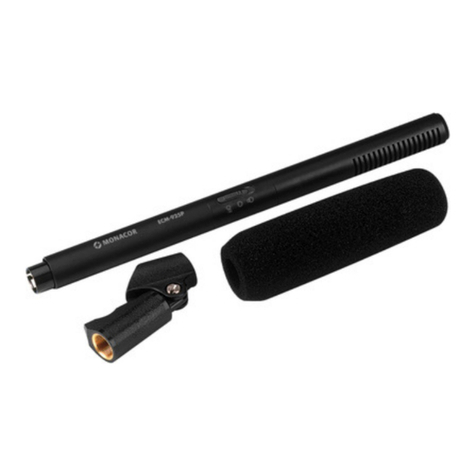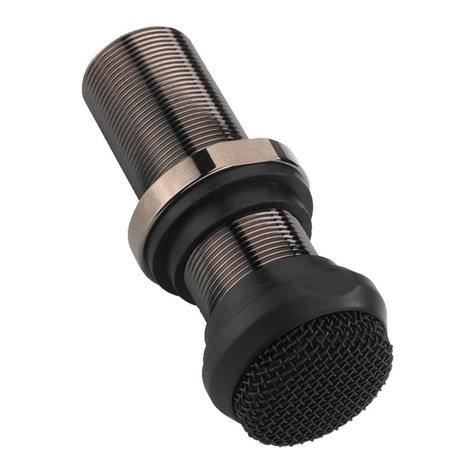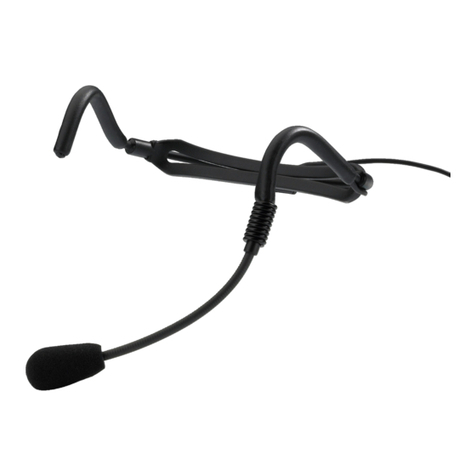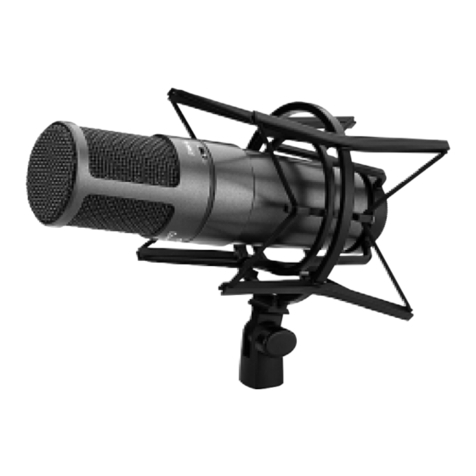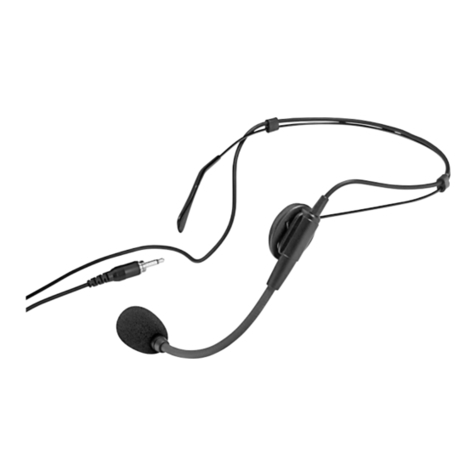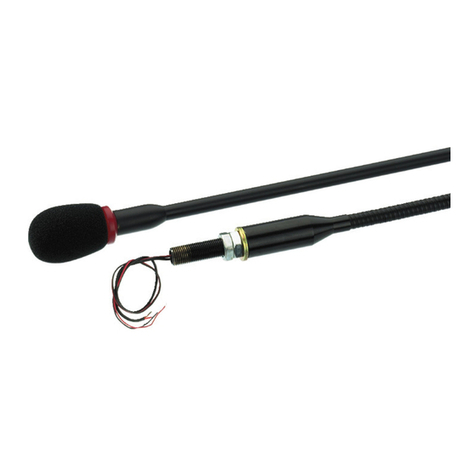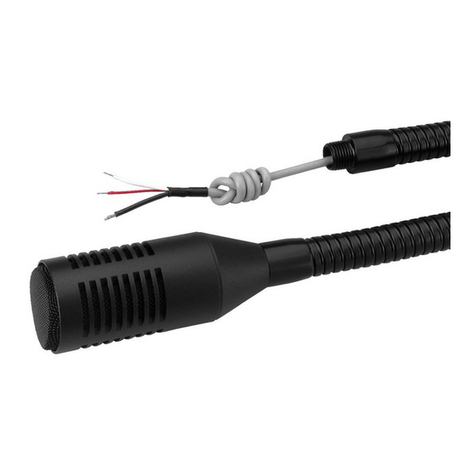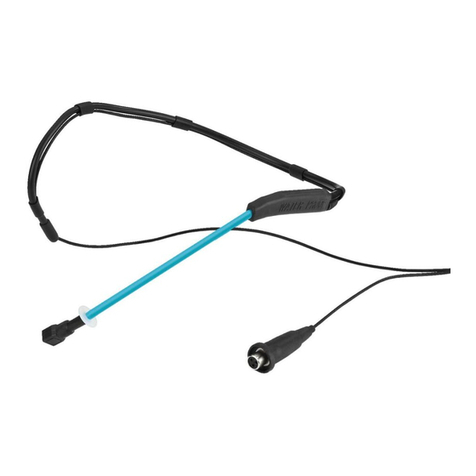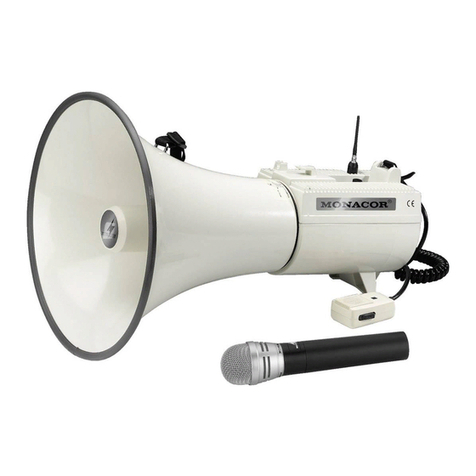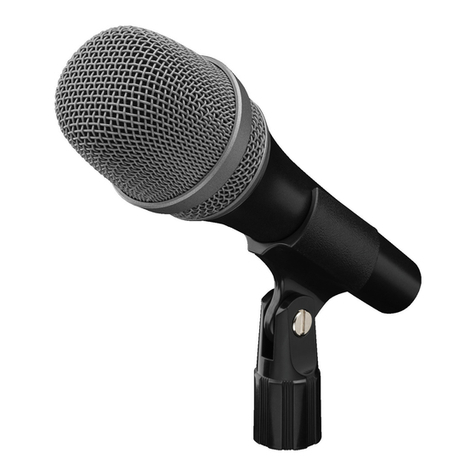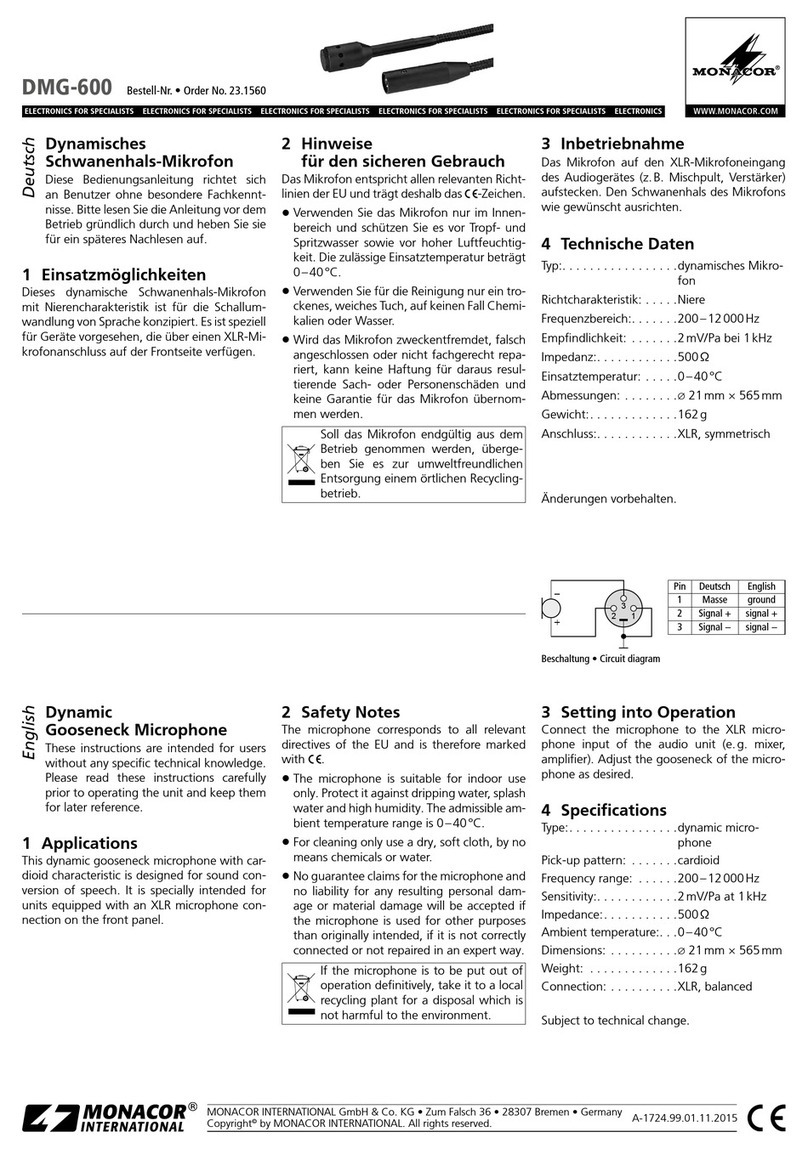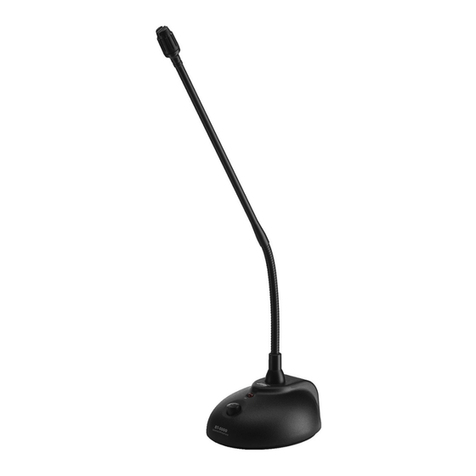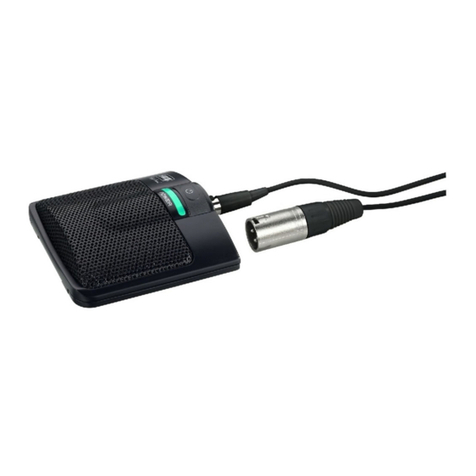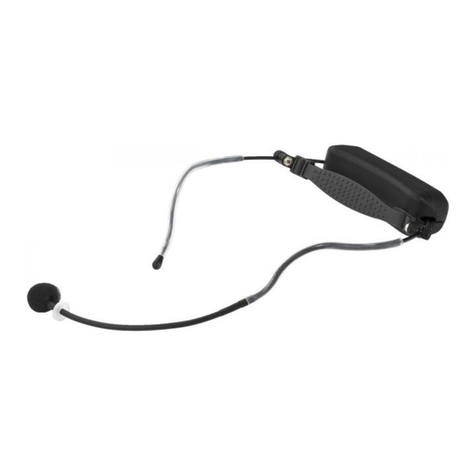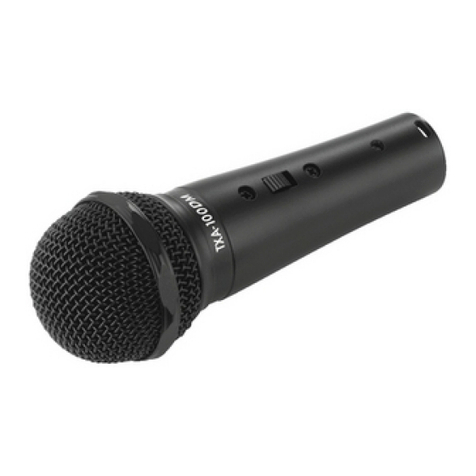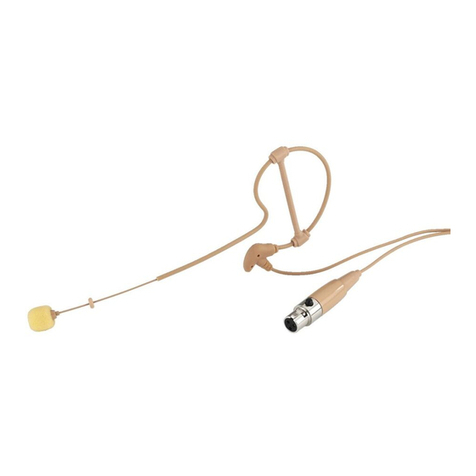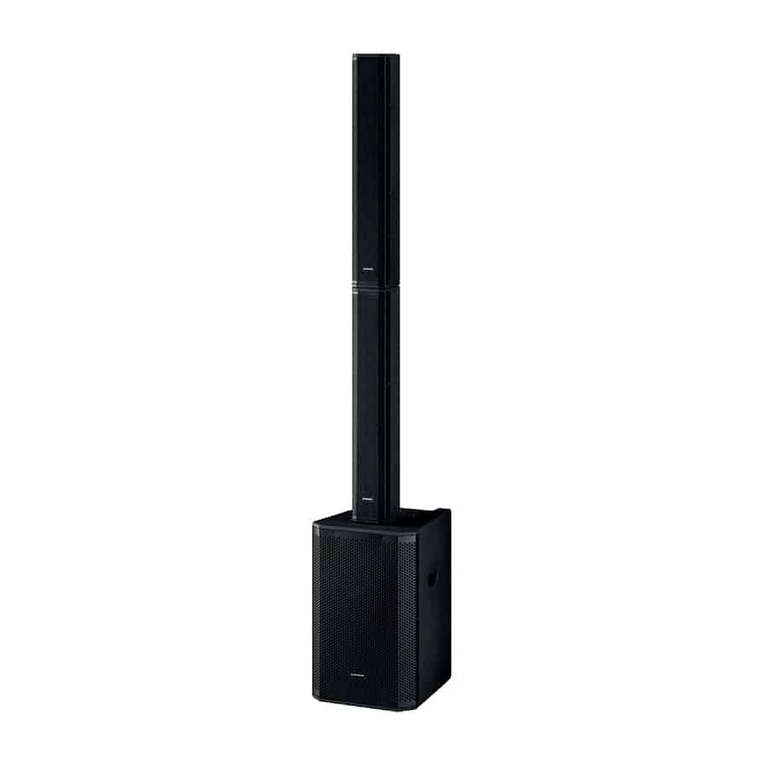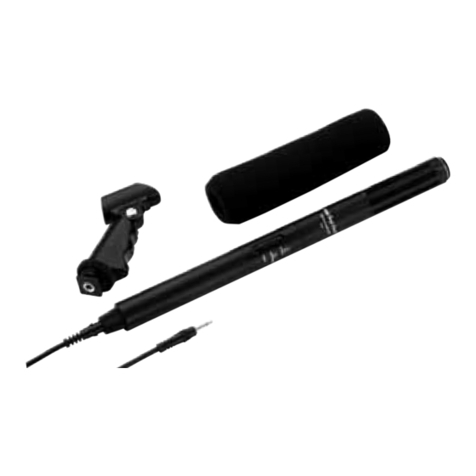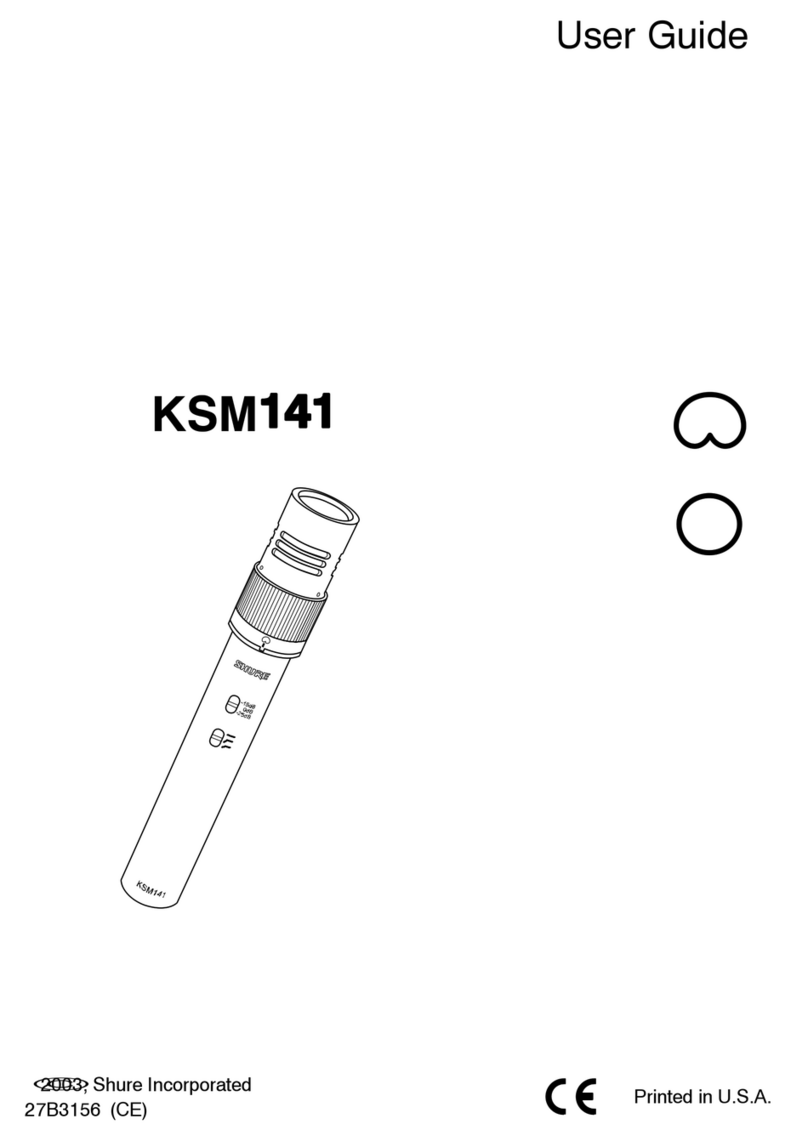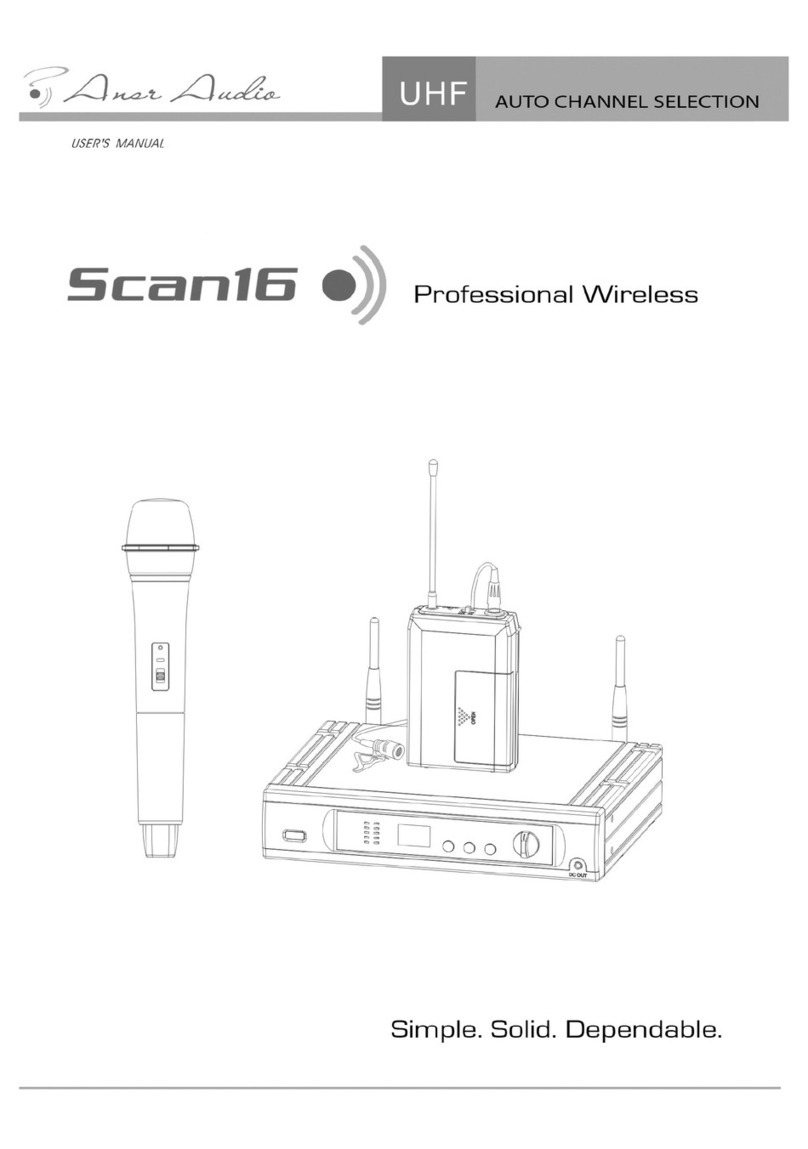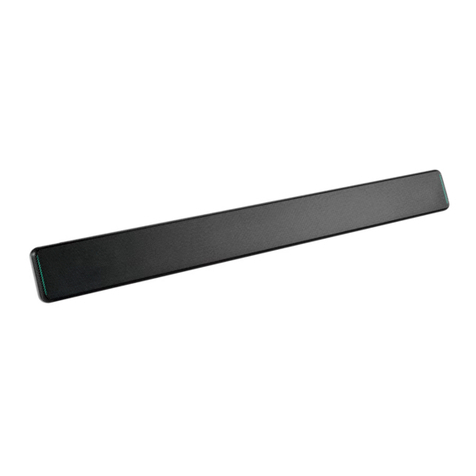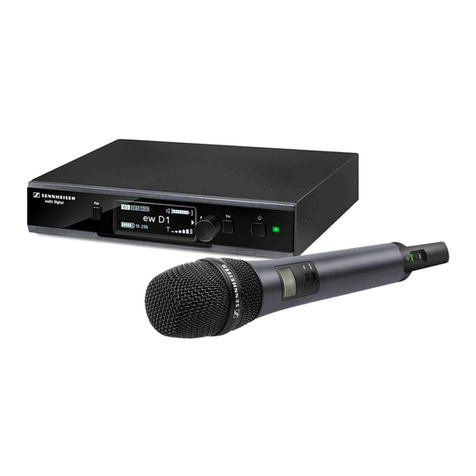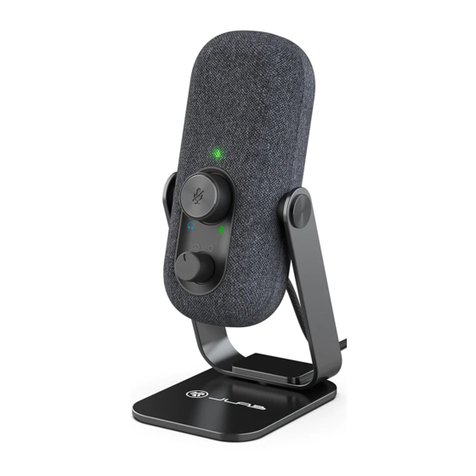
ELECTRONICS FOR SPECIALISTS ELECTRONICS FOR SPECIALISTS ELECTRONICS FOR SPECIALISTS ELECTRONICS FOR SPECIALISTS ELECTRONICS FOR SPECIALISTS ELECTRONICS
HSE-150/SK
Bestell-Nr. • Order No. 23.4050
MONACOR INTERNATIONAL GmbH & Co. KG • Zum Falsch 36 • 28307 Bremen • Germany
Copyright©by MONACOR INTERNATIONAL. All rights reserved. A-0396.99.02.09.2018
Microphone serre-tête
Cette notice s‘adresse aux utilisateurs sans
connaissances techniques particulières. Veuillez
lire la présente notice avant le fonctionnement
et conservez-la pour pouvoir vous y reporter ul-
térieurement.
1 Possibilités d’utilisation
Le microphone serre-tête HSE-150/SK, discret et ultra
léger, est idéalement adapté pour des applications
de discours et de chant requérant une grande liberté
de mouvements. Pour le fonctionnement, un adapta-
teur d’alimentation (p.ex. EMA-1 ou EMA-300P) ou
un émetteur de poche (TXS-…HSE) pour la transmis-
sion audio sans fil est en plus nécessaire.
2 Conseils Importants
Le microphone répond à toutes les directives nécessaires
de l’Union européenne et porte donc le symbole .
•
Le microphone n’est conçu que pour une utilisation
en intérieur. Protégez-le de tout type de projections
d’eau, des éclaboussures, d’une humidité élevée et
de la chaleur (plage de température de fonctionne-
ment autorisée : 0–40°C).
•
Pour le nettoyer, utilisez uniquement un chiffon sec et
doux, en aucun cas de produits chimiques ou d’eau.
•
Nous déclinons toute responsabilité en cas de dom-
mages matériels ou corporels résultants si le micro-
phone est utilisé dans un but autre que celui pour
lequel il a été conçu, s’il n’est pas correctement
branché ou s’il n’est pas réparé par une personne
habilitée ; en outre, la garantie deviendrait caduque.
Lorsque le microphone est définitivement
retiré du service, vous devez le déposer dans
une usine de recyclage adaptée pour contri-
buer à son élimination non polluante.
CARTONS ET EMBALLAGE
PAPIER À TRIER
3 Fonctionnement
1) Mettez le microphone serre-tête et positionnez la
capsule micro près de la bouche dans une position
favorable pour parler. Pour ce faire, le bras du mi-
crophone peut bouger, être déplacé et tourné sur
le support de l’articulation.
2) Reliez la fiche mini XLR du cordon micro à la prise
d’entrée de l’émetteur de poche ou de l’adapta-
teur d’alimentation. Si vous utilisez un adaptateur
d’alimentation, reliez-le à une entrée micro d’un
appareil audio.
4 Caractéristiques techniques
Type : . . . . . . . . . . . . . . . back électret
Caractéristique : . . . . . . . omnidirectionnel
Bande passante :. . . . . . . 20–20000 Hz
Impédance : . . . . . . . . . . 1kΩ
Sensibilité : . . . . . . . . . . . 8mV/Pa/1 kHz
Pression sonore max. : . . 130dB
Alimentation :. . . . . . . . . 1,5– 9 V (⎓) par adaptateur
alimentation ou émetteur de
poche
Poids :. . . . . . . . . . . . . . . 7g
Branchement : . . . . . . . . cordon 1,2m de long avec
mini XLR femelle 3 pôles
2
3 1 1 = masse
2 = signal audio
3 = alimentation
Tout droit de modification réservé.
Headband Microphone
These instructions are intended for users with-
out any specific technical knowledge. Please
read these instructions carefully prior to opera-
tion and keep them for later reference.
1 Applications
The inconspicuous and ultralight headband micro-
phone HSE-150/SK is ideally suited for vocal sound
and speech applications which require much free-
dom of movement. For operation, additionally a
power supply adapter (e.g. EMA-1, EMA-300P) or
for wireless audio transmission, a pocket transmitter
(TXS-...HSE) is required.
2 Important Notes
The microphone corresponds to all relevant directives
of the EU and is therefore marked with .
•
The microphone is suitable for indoor use only.
Protect it against dripping water and splash water,
high air humidity and heat (admissible ambient
temperature range 0– 40 °C).
•
For cleaning only use a dry, soft cloth, never use
chemicals or water.
•
No guarantee claims for the microphone or liabil-
ity for any resulting personal damage or material
damage will be accepted if the microphone is used
for other purposes than originally intended, if it is
not correctly connected, or if it is not repaired in
an expert way.
If the microphone is to be put out of oper-
ation definitively, take it to a local recycling
plant for a disposal which is not harmful to
the environment.
3 Setting into Operation
1) Put on the headband microphone and place the
microphone cartridge close to your mouth into
a favourable talk position. For this purpose, the
microphone arm can be moved, and be adjusted
and turned in the joint support.
2) Connect the mini XLR inline jack of the microphone
cable to the input jack of the pocket transmitter or
power supply adapter. When using a power supply
adapter, connect it to the microphone input of an
audio unit.
4 Specifications
Microphone type: . . . . . . back electret
Pick-up characteristic: . . . omnidirectional
Frequency range: . . . . . . 20–20000 Hz
Impedance:. . . . . . . . . . . 1kΩ
Sensitivity:. . . . . . . . . . . . 8mV/Pa at 1 kHz
SPL max.: . . . . . . . . . . . . 130dB
Power supply: . . . . . . . . . 1.5–9V (⎓) via power
supply adapter or pocket
transmitter
Weight: . . . . . . . . . . . . . 7 g
Connection: . . . . . . . . . . 1.2m cable with 3-pole mini
XLR inline jack
2
3 1 1 = ground
2 = audio signal
3 = power supply
Subject to technical modification.
Kopfbügel-Mikrofon
Diese Bedienungsanleitung richtet sich an Be-
nutzer ohne besondere Fachkenntnisse. Bitte
lesen Sie die Anleitung vor dem Betrieb gründ-
lich durch und heben Sie sie für ein späteres
Nachlesen auf.
1 Einsatzmöglichkeiten
Das unauffällige und ultraleichte Kopfbügel-Mikro-
fon HSE-150/SK eignet sich optimal für Gesangs- und
Sprachanwendungen, die viel Bewegungsfreiheit er-
fordern. Für den Betrieb wird zusätzlich ein Speise-
adapter (z.B. EMA-1, EMA-300P) oder zur drahtlosen
Tonübertragung ein Taschensender (TXS-...HSE).
2 Wichtige Hinweise
Das Mikrofon entspricht allen relevanten Richtlinien
der EU und trägt deshalb das -Zeichen.
•
Setzen Sie das Mikrofon nur im Innenbereich ein
und schützen Sie es vor Tropf- und Spritzwasser,
hoher Luftfeuchtigkeit und Hitze (zulässiger Ein-
satztemperaturbereich 0– 40 °C).
•
Verwenden Sie für die Reinigung nur ein trockenes,
weiches Tuch, niemals Chemikalien oder Wasser.
•
Wird das Mikrofon zweckentfremdet, falsch ange-
schlossen oder nicht fachgerecht repariert, kann
keine Haftung für daraus resultierende Sach- oder
Personenschäden und keine Garantie für das Mik-
rofon übernommen werden.
Soll das Mikrofon endgültig aus dem
Betrieb genommen werden, übergeben
Sie es zur umweltgerechten Entsorgung
einem örtlichen Recyclingbetrieb.
3 Inbetriebnahme
1) Das Kopfbügelmikrofon aufsetzen und die Mikro-
fonkapsel dicht vor dem Mund in eine günstige
Sprechposition bringen. Dazu lässt sich der Mikro-
fonarm schwenken und in der Gelenkhalterung
verschieben und drehen.
2) Die Mini-XLR-Kupplung des Mikrofonkabels in
die Eingangsbuchse des Taschensenders oder des
Speiseadapters stecken. Bei Verwendung eines
Speiseadapters diesen an den Mikrofoneingang
eines Audiogerätes anschließen.
4 Technische Daten
Mikrofontyp:. . . . . . . . . . Back-Elektret
Richtcharakteristik: . . . . . Kugel
Frequenzbereich: . . . . . . 20– 20000 Hz
Impedanz:. . . . . . . . . . . . 1kΩ
Empfindlichkeit: . . . . . . . 8mV/Pa bei 1 kHz
Maximaler Schalldruck: . . 130dB
Stromversorgung: . . . . . . 1,5–9V (⎓) über Speise-
adapter oder Taschensender
Gewicht:. . . . . . . . . . . . . 7g
Anschluss:. . . . . . . . . . . . 1,2-m-Kabel mit 3-pol.
Mini-XLR-Kupplung
2
3 1 1 = Masse
2 = Audiosignal
3 = Stromversorgung
Änderungen vorbehalten.
DeutschEnglishFrançais

